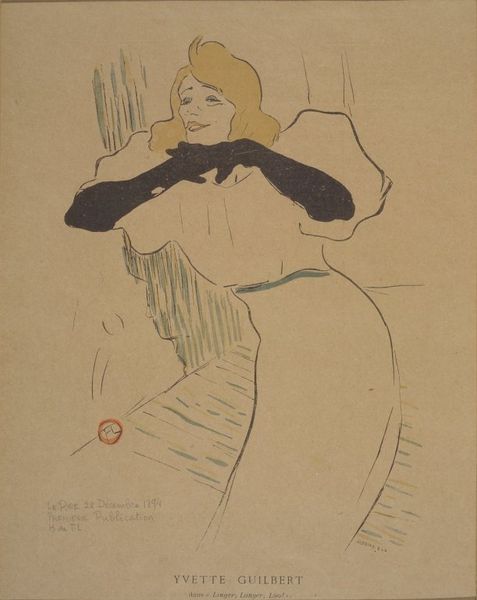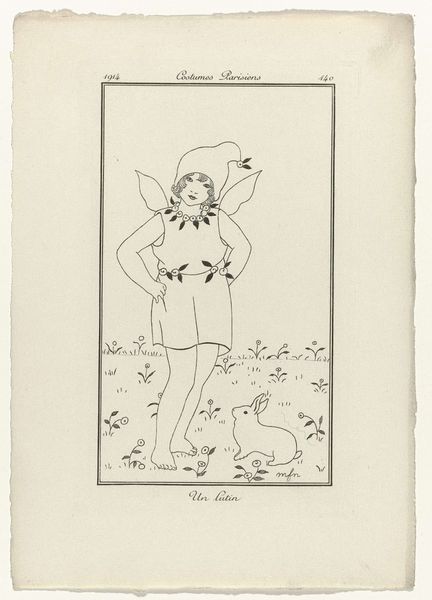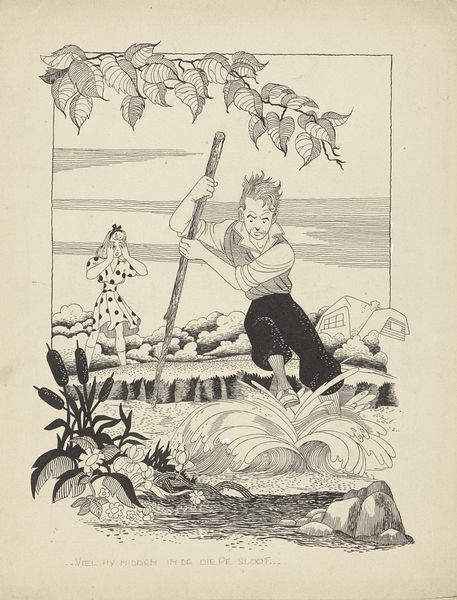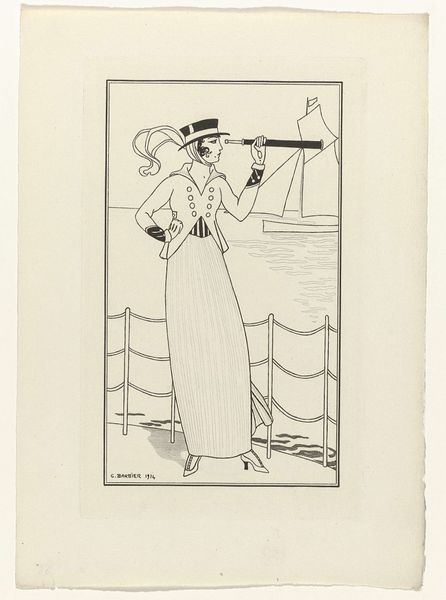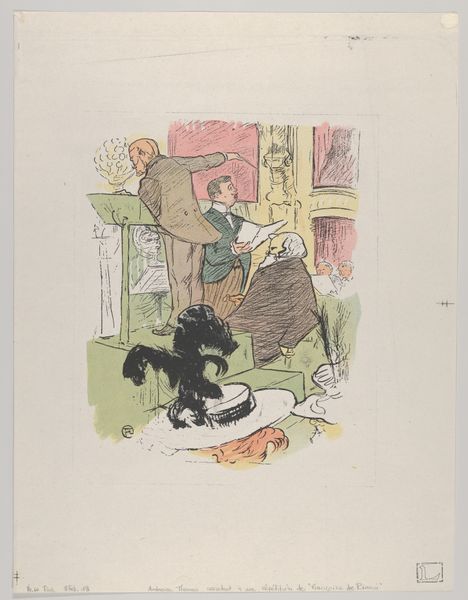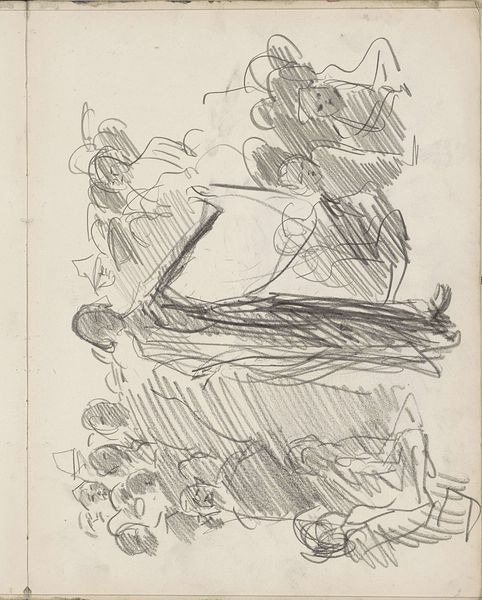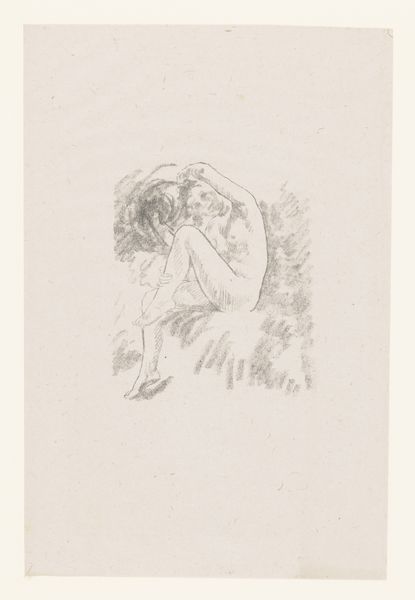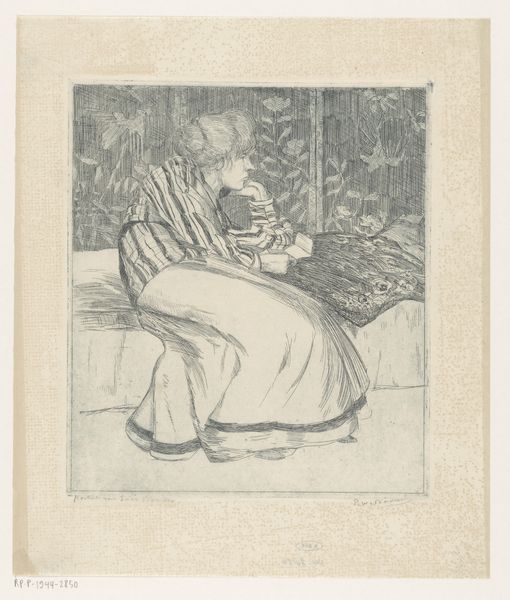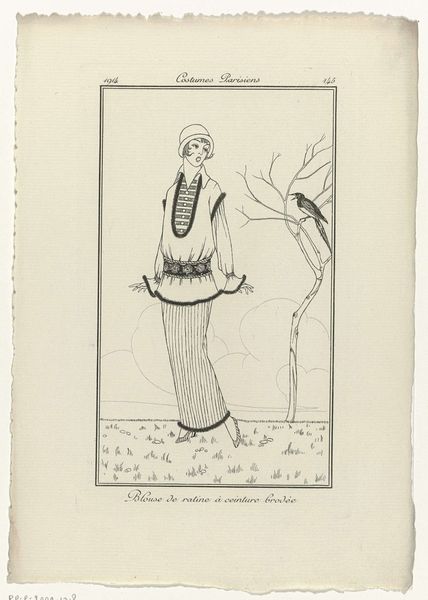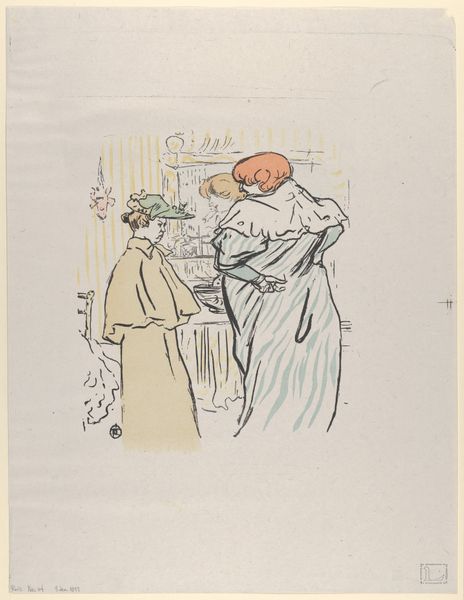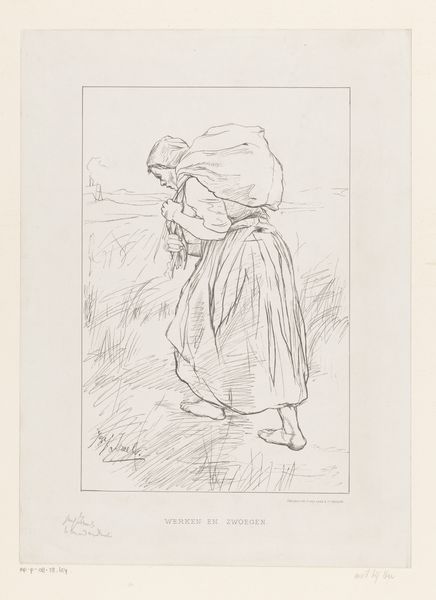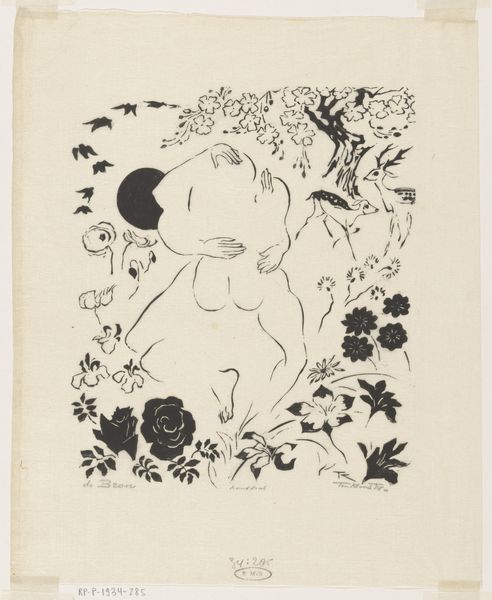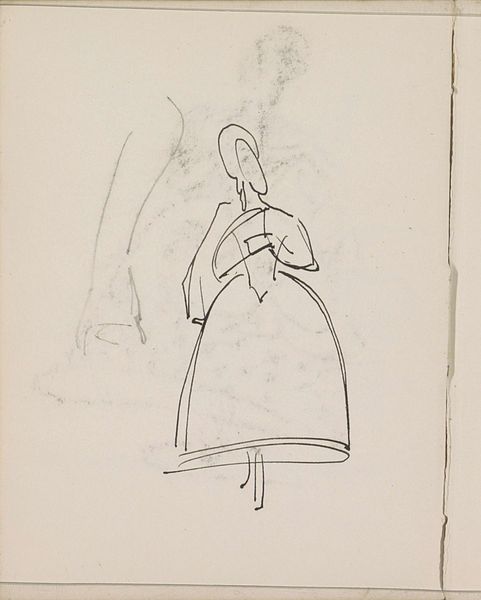
Dimensions: Image: 10 5/8 × 8 7/16 in. (27 × 21.5 cm) Sheet: 16 9/16 × 12 13/16 in. (42 × 32.5 cm)
Copyright: Public Domain
Curator: Immediately striking is the artist’s masterful use of line to convey such personality with so few strokes. Editor: We’re looking at Toulouse-Lautrec’s lithograph, "Yvette Guilbert," created in 1894. This piece resides here at the Metropolitan Museum of Art. It’s an example of the artist's fascination with popular culture and performers of the time. Curator: It feels quite modern, really. Almost like a caricature. But her elegant posture and gloves also signal her elevated status as a celebrated performer. Tell me more about the processes behind this "poster" artwork. Editor: Lautrec embraced lithography, as a mass-reproducible medium. Think about the collaborative environment of the print shop, the labor involved in grinding stones, preparing inks, and running the press—it highlights artmaking as a social endeavor tied to urban culture and its economy. This specific plate is printed with lovely olive-green, black and brick-red ink on cream wove paper. Curator: The flattening of the space is something I am fascinated by. The green strokes around the stage backdrop read less like a 3-dimensional plane, and more of an indication of “backdrop”. It gives it an almost collage-like feel of material assemblage and its social life within performance and advertising. Editor: Lautrec challenged the hierarchy of the art world by elevating the status of posters. He was able to take these commercial endeavors into the realm of fine art. But it is impossible to disentangle Lautrec’s images from the social context that produced both the star persona and the posters circulating throughout Paris. Curator: I am taken by her world-weariness in the face of the rising tide of consumer culture! It's also interesting to me to imagine the consumption of color for printing, especially thinking of red as such a luxurious item in the trade, for so long. Editor: Thinking about Lautrec and Guilbert helps us question how cultural institutions help shape artistic value, both through visibility, critical discussions and material impact! Thank you for that stimulating dive into production process.
Comments
No comments
Be the first to comment and join the conversation on the ultimate creative platform.
